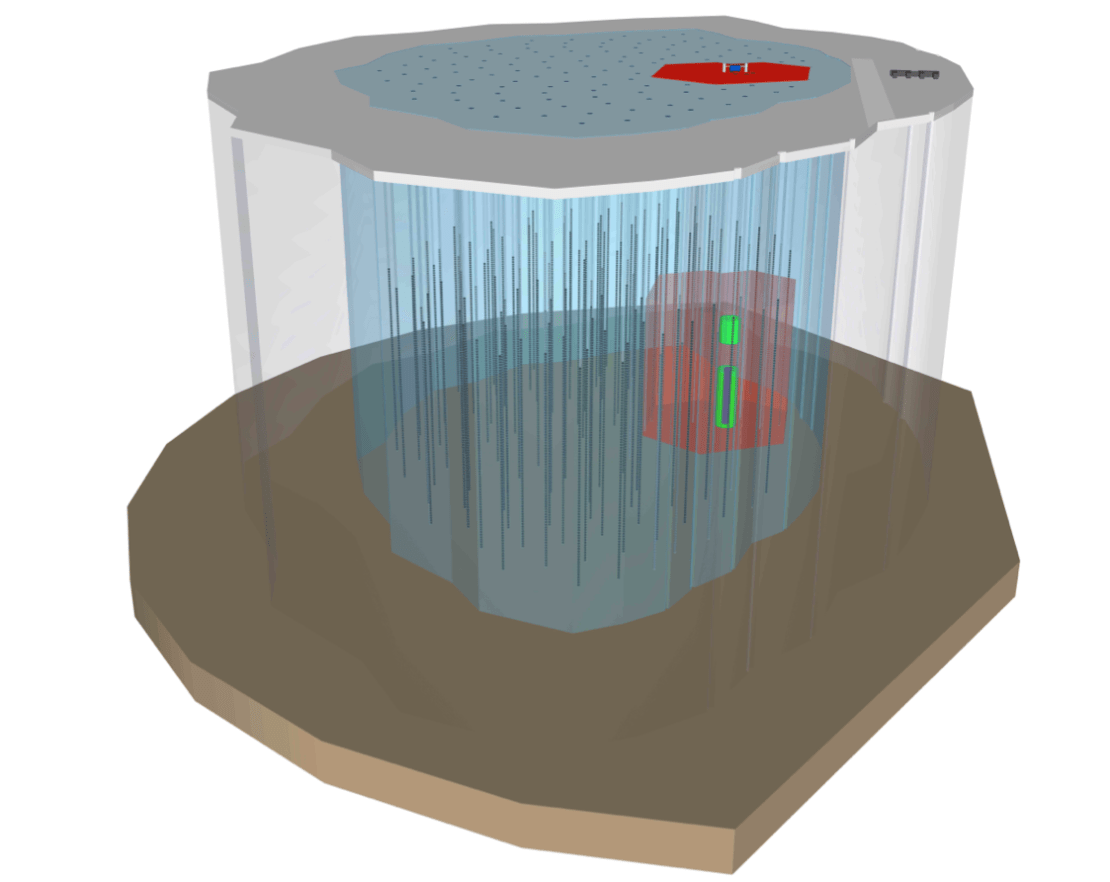Yet another year has come to an end for IceCube with plenty of new science results, an always growing international collaboration, and plans for an update to the IceCube Neutrino Observatory. In the meantime, the detector’s performance has broken still another record, and many outreach activities, including the recently launched IceCube Masterclass, accompanied this hectic scientific activity.

Fourteen new papers by the IceCube Collaboration were submitted or published in 2014. Following the impact of the first observation of cosmic neutrinos in November 2013, nine more candidates were revealed in a paper published this year, featuring still the highest energy neutrino ever observed (see image above). Searches for point sources, either extended, point-like or faint, have not yet identified a cosmic neutrino source, but several models have been ruled out and we have learned that the contribution of GRBs to the observed astrophysical neutrino flux cannot be larger than about 1%.
IceCube is now an essential detector in the observation of the extreme universe, and collaborating with other detectors is becoming both more regular and more intense. In 2014, for example, a search for cosmic sources by a joint effort between initial LIGO-Virgo and IceCube was published, which did not find significant coincident events but allowed researchers to derive upper limits on the rate of cosmic processes that produce strong neutrino and gravitational wave emission.

But, the IceCube observatory is a multipurpose facility, and the collaboration has also provided important results for neutrino oscillation measurements and in the search for dark matter or relativistic monopoles. The latest measurement of the neutrino oscillation parameters is compatible with and comparable in precision to those of dedicated oscillation experiments such as MINOS, T2K or Super-Kamiokande. Thanks to the dense infill array DeepCore, one of its subdetectors, IceCube has also become a competitive detector in the study of neutrino oscillations.
IceCube cosmic-ray results were also used alongside observations from NASA’s Interstellar Boundary Explorer, or IBEX, in a study of the magnetic fields that surround our solar system published in Science.
These impressive results rest on two pillars: the IceCube detector and the IceCube Collaboration. The detector’s performance keeps improving with a steady uptime of over 99% and a new record of 96% in the so-called “clean uptime,” which is the fraction of time the detector is taking pristine analysis-ready data with all its sensors. Last year, not a single sensor, or DOM, had permanently failed. The robustness of the IceCube sensors is the guarantor of a long future for the IceCube Neutrino Observatory.
The IceCube Collaboration, lead by Prof. Olga Botner, is now made up of about 300 researchers from 44 institutions in 12 countries. In 2014, four new members, South Dakota School of Mines and Technology, Yale University, Michigan State University and Drexel University, have joined this international collaboration that was created in 1999 with 16 institutions in 4 countries.

Several awards and recognitions have capped off this amazing year for IceCube.
In March, former IceCube PhD student Anne Schukraft was honored with the 2014 Hertha Sponer Prize by the German Physical Society for her contribution to the measurement of the neutrino energy spectrum. A month later, Nathan Whitehorn, a former IceCube postdoctoral researcher, was named a “Young Star” by the Division of Astrophysics of the American Physical Society for his work in IceCube. In October, Smithsonian magazine honored Prof. Francis Halzen, IceCube PI, with the 2014 American Ingenuity Award in the physical sciences, presented by Stephen Hawking. And, toward the end of the year and during the first days of 2015, we learned that Astronomy Magazine and the American Physical Society have highlighted IceCube as one of the top ten space and physics stories of the year.
And last, but not least, 2014 also saw the beginning of future designs for IceCube. The discovery of cosmic neutrinos has shown that an in-depth exploration of the neutrino universe requires a next-generation IceCube detector. Named IceCube-Gen2 and with a tenfold increase in volume to about 10 cubic kilometers, it will have the goal of delivering substantial samples of very high energy astrophysical neutrinos, in the PeV to EeV range, and yielding hundreds of neutrinos across all flavors at energies above 100 TeV. This will enable detailed spectral studies, significant point source detections, and new discoveries.

The IceCube-Gen2 collaboration is also proposing to deploy the Precision IceCube Next Generation Upgrade (PINGU) subarray, which will target precision measurements of neutrino oscillation parameters and the determination of the neutrino mass hierarchy as well as the search for dark matter.
Three important steps towards this next-generation IceCube Neutrino Observatory were taken in 2014. On Jan 9, 2014, the PINGU letter of intent was submitted to arXiv, where the IceCube-PINGU collaboration detailed its plan to built a low-energy upgrade to the IceCube Neutrino Observatory. By April 2014, the neutrino and physics communities were invited to join IceCube collaborators in a workshop in Arlington, Virginia, to review and discuss potential enhancements to IceCube. And just a few days before the start of 2015, the IceCube-Gen2 collaboration submitted a white paper with its vision for the future of neutrino astronomy in Antarctica.
IceCube’s hopes for 2015 include another successful year of neutrino research and the final proposal for the IceCube Neutrino Observatory upgrade. We’ll keep you posted!